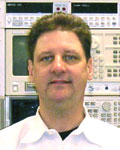| Low Speed and Low Power Amplifiers |
|
|
|
Objective:
Understand various characteristics and applications of low speed and low power amplifiers.
|
|
Reading Assignment:
- Understand how low voltage and low power amplifiers can be used in real-world applications. Learn the benefits and drawbacks of rail-to-rail inputs. Application note AN-71 from pages 4-11
- For reference and to learn the organization of a common datasheet, as well as, find the values needed for some of the problems: The LMV931 Datasheet pages 1-19
Additional Resources
- Consult the knowledge base using the following keywords:
- Slew rate
- CMRR
- Rail to Rail
- Common Mode Range
|
|
Research Assignment:
- What is the problem caused when using a resistor divider style rail-to-rail op amp? What rail-to-rail input architecture is preferable? Why? check answer
- What is the definition of slew rate? check answer
- Use the LMV931 datasheet to find the typical slew rate under the AC Electrical Characteristics rated at 2.7V. Use this slew rate and maximum output voltage to determine Full Power Bandwidth (round to nearest mW). check answer
- What is the definition of "Common Mode Range"? (Hint, use the Knowledge Base, keyword CMR). check answer
- Use the LMV931 datasheet to look at the graph of Offset Voltage vs. Common Mode Range. What is different about this graph compared to most high voltage operational amplifiers? check answer
|
|
Program Coordinator/Professor
Paul Rako
 Paul Rako is a Senior Analog Applications Engineer working in the Amplifier Group at National Semiconductor. He started his career as an automotive engineer in Detroit, working for both GM and Ford. After moving to Silicon Valley in the early eighties he worked for a military contractor and then started his own business as a system-level design consultant. His clients included Hewlett Packard, Teledyne and Schlumberger as well as several startups. He attended both General Motors Institute (now the Kettering Institute) and the University of Michigan. His interests include politics, philosophy, motorcycles and making music and videos. Paul Rako is a Senior Analog Applications Engineer working in the Amplifier Group at National Semiconductor. He started his career as an automotive engineer in Detroit, working for both GM and Ford. After moving to Silicon Valley in the early eighties he worked for a military contractor and then started his own business as a system-level design consultant. His clients included Hewlett Packard, Teledyne and Schlumberger as well as several startups. He attended both General Motors Institute (now the Kettering Institute) and the University of Michigan. His interests include politics, philosophy, motorcycles and making music and videos.
|
|
Quiz:
Take a quiz to check your understanding of this subject. Click here.
Answer all questions correctly to receive a certificate from Dean Bob Pease.
|
